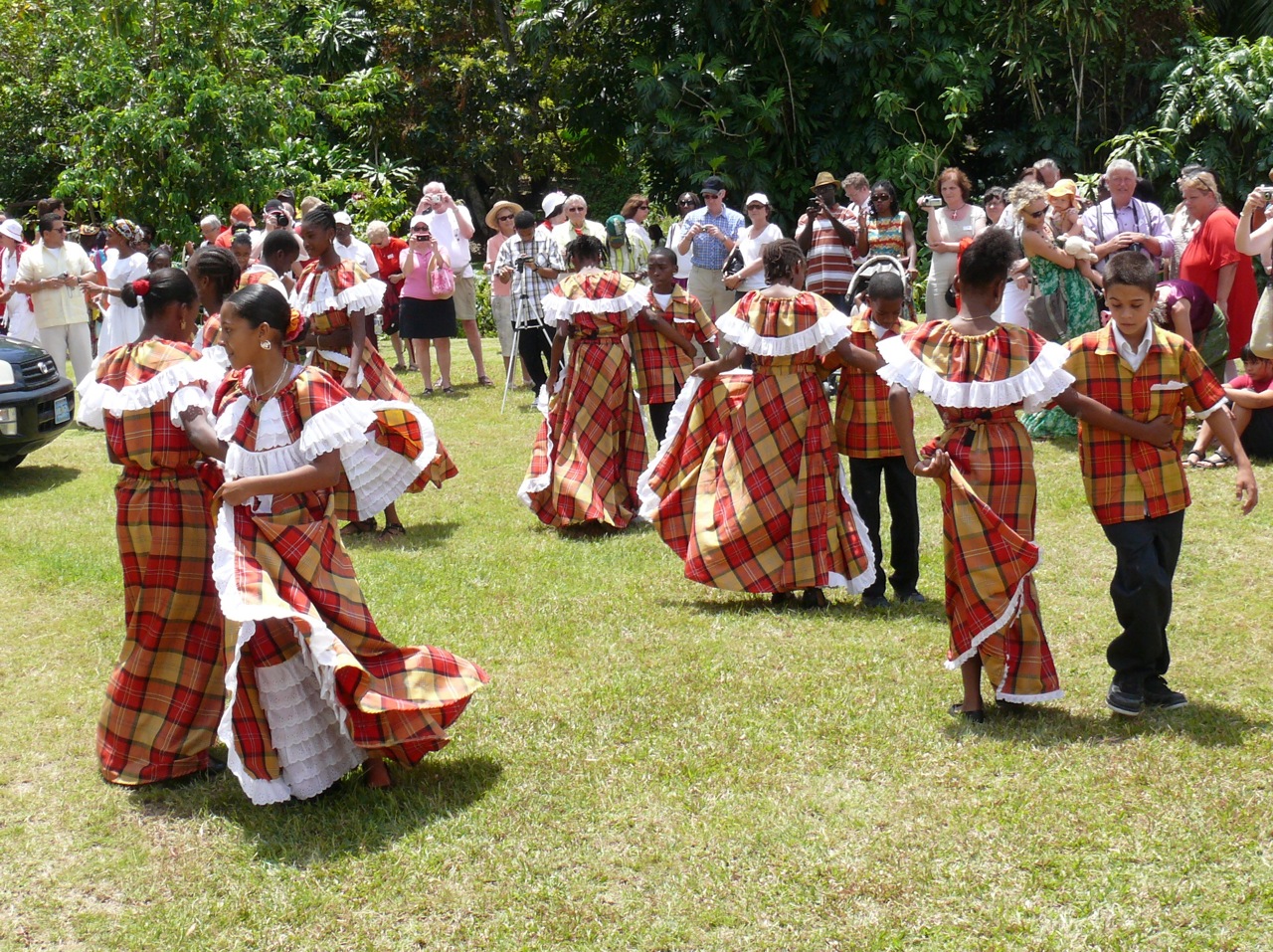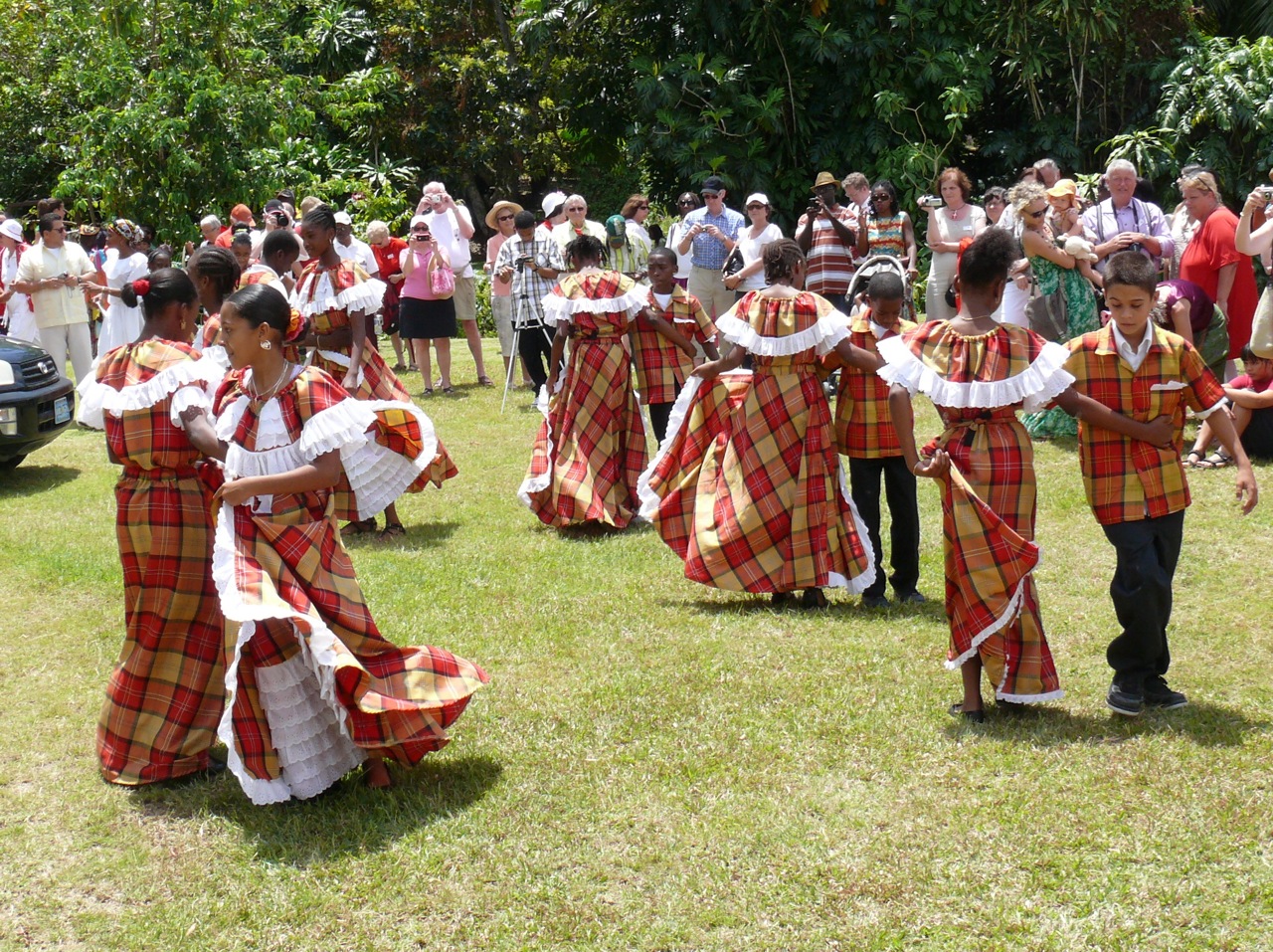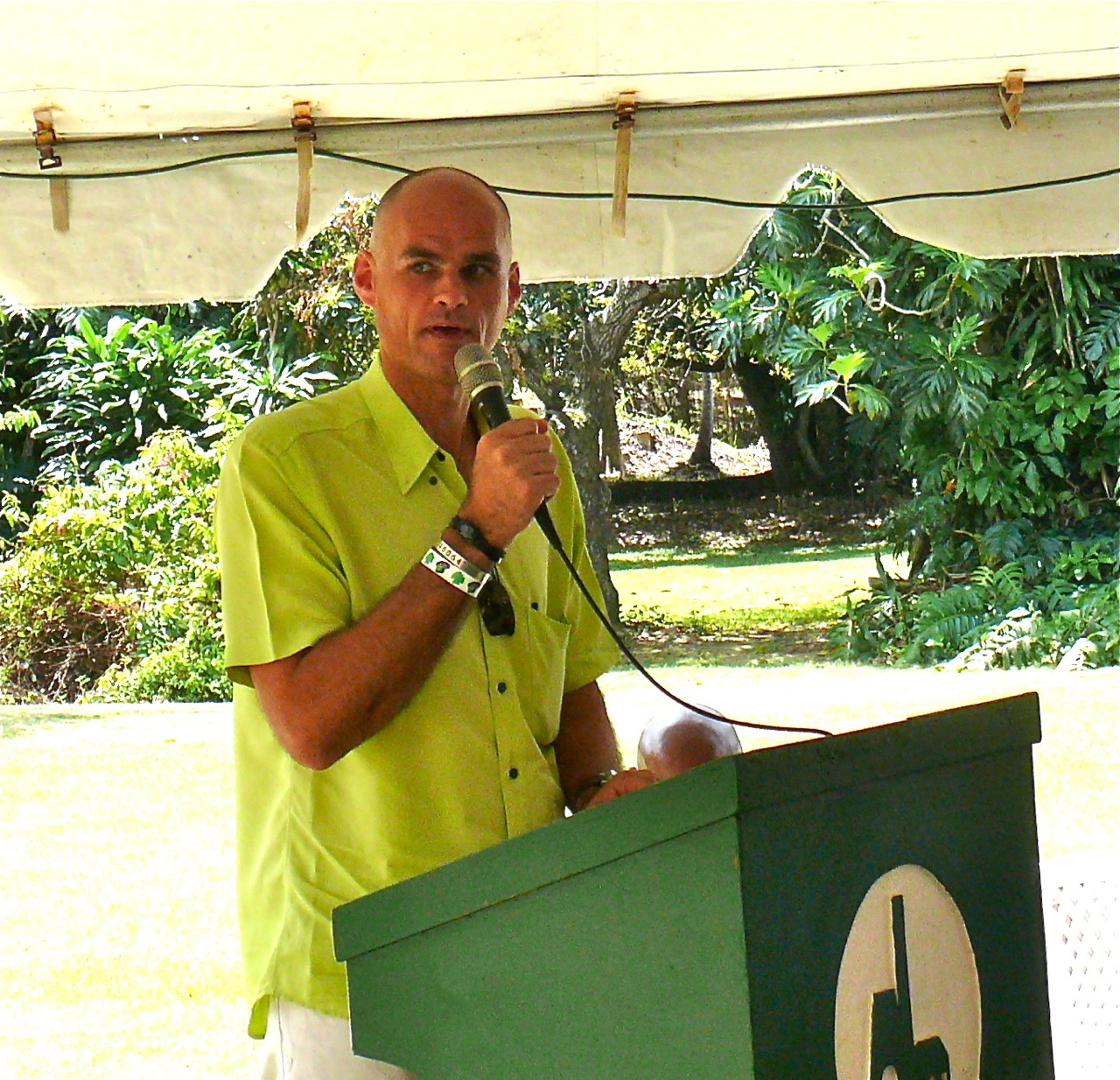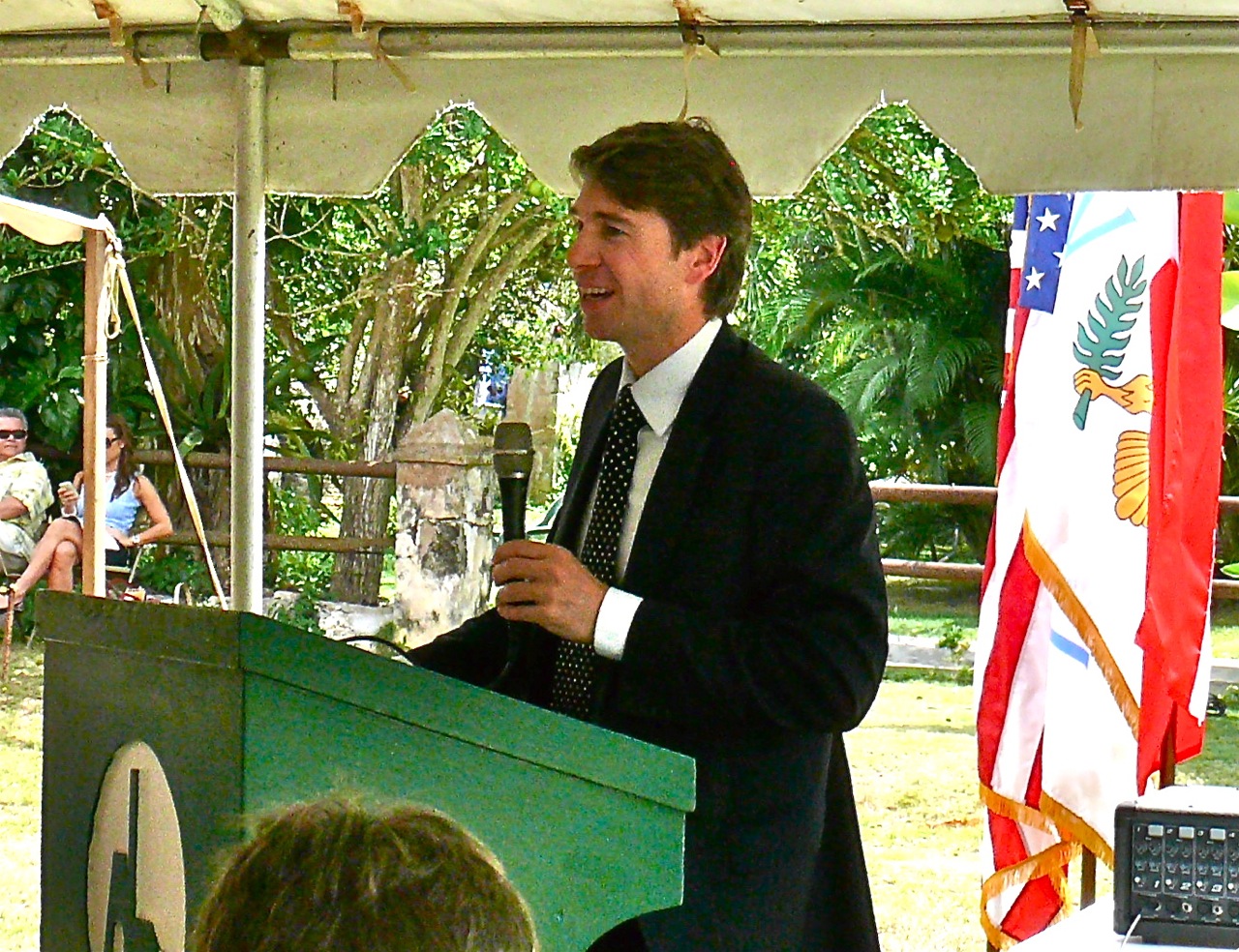

As Virgin Islanders know from school, Transfer Day marks Denmark’s sale of the Virgin Islands to the United States on March 31, 1917.
It was a warm, breezy day, and the bougainvillea were in bloom at the Lawaetz Family Museum on Mahogany Road, where the annual commemorative ceremony has been held for the past 15 years.
Cars began arriving by 9 a.m. and by 10 a.m. hundreds of Virgin Islanders with Danish connections, or Danes with V.I. connections, had filled the grounds of the Lawaetz family home.
The rustic old plantation, with its Danish stone and woodwork, stood as a palpable reminder of the centuries of ties between that chilly European nation and the island of St. Croix.
V.I. officials and visiting dignitaries alike waxed poetic about the historic connections to Denmark. Assistant Tourism Commissioner Brad Nugent said the numbers of Danish visitors to the territory are growing each year and new, direct flights should help boost those figures even more.
"Starting in October, we will have chartered direct flights weekly from Copenhagen and Billund, in Denmark, to the Island of St. Croix," Nugent said. About 10,000 Danes visit the territory a year now, and the new Boeing 757 jet flights add about 200 seats per week for Danes to come visit without any layovers or delays, he said.

Marquart got the idea to start the school after attending a Transfer Day ceremony two years ago and being inspired by a speech from former senator and V.I. historian Wayne James. After some more conversation with James over dinner, Marquart went home and met with some friends and colleagues, "and two hours later we decided to start a traveling school," he said.
The first group of 24 students came for three months, starting last November, and the second group of 23 arrived earlier this month and will stay until May, he said. Right now, they are on Water Island, "doing fun stuff, team building and preparing them to start their own projects," he said. Later, they will come to St. Croix for work and study at the V.I. Sustainable Farming Institute, he said.
"I would like to see more, in terms of exchanges between local youths and groups, and I believe we can do more," he said.
Each of the speakers gave a bit of a different perspective on the history of the transfer, on Danish ties to the territory, on V.I. history, and where we are headed now.

After dreaming for weeks about sunny skies and warm, clear waters, he was chagrined when he stepped off the plane into a downpour a few days ago, he recalled.
Ninety-four years after the transfer, "strong traditions still tie our countries together," he said, going on to say he was glad that young Danes were visiting the islands through the new folk high school.
Gov. John deJongh Jr. spoke about the ties to Denmark but also about the significance of becoming part of the United States.
“On March 31, 1917, these beautiful islands joined in the American dream. Ever since then, they have been on a steady march of progress toward fully sharing in this country’s promise, as well as toward assuming full responsibility for protecting its way of life and noble ideals,” deJongh said.
During the ceremony the Santa Cruz Brass Ensemble played the Danish national anthem, while several dozen Danes stood and sung along in Danish. The band then struck up "The Star Spangled Banner" and the “Virgin Islands March.”
After the benediction, masqueraders from Pearl B. Larsen Elementary performed a costumed dance routine, continuing the long Caribbean tradition, whose roots extend back to the African origins of much of the population. The Pearl B. Larsen School Dancers danced a quadrille, clad in madras and white linen.
And the Per Ankh Institute Dancers, clad in the traditional white of Crucian and Caribbean women of times gone by, performed a dance routine "Giving Voice to Our Ancestors," to the beat of African drums. Their performance helped to remind the audience that while the flag flying over these islands switched from that of Denmark to the U.S. flag, most of the people’s ancestors came not from Europe, but Africa.
During the entertainment, some queued up for lunch while others toured the Lawaetz Museum and wandered the grounds enjoying the sunny weather and beautiful, bucolic setting.